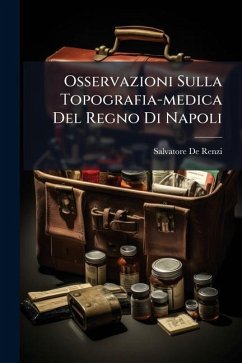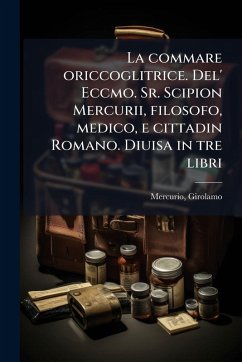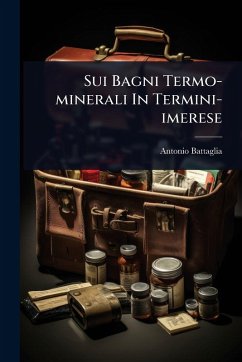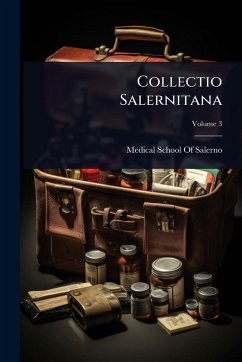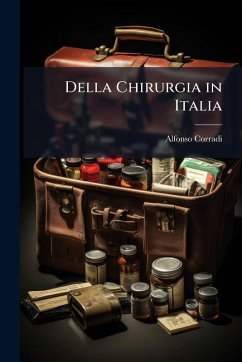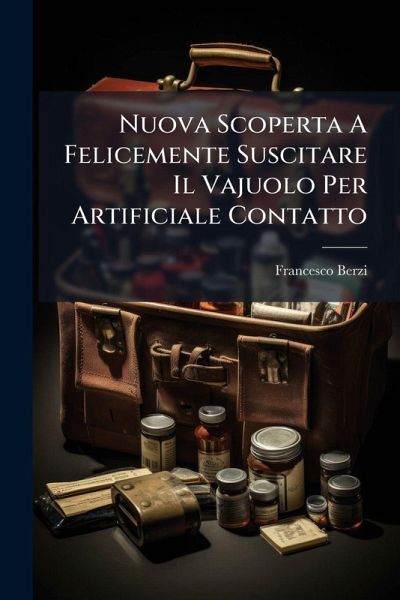
Nuova Scoperta A Felicemente Suscitare Il Vajuolo Per Artificiale Contatto

PAYBACK Punkte
9 °P sammeln!
Nuova Scoperta A Felicemente Suscitare Il Vajuolo Per Artificiale Contatto , by Francesco Berzi, explores the innovative, at the time, medical practice of smallpox inoculation. This historical work delves into the methods and observations surrounding the artificial induction of smallpox, a groundbreaking approach to combating the deadly disease. Berzi's account provides valuable insights into the medical landscape of the 18th century, particularly in Italy, and highlights the early efforts to understand and control infectious diseases through deliberate exposure. This book is a significant con...
Nuova Scoperta A Felicemente Suscitare Il Vajuolo Per Artificiale Contatto , by Francesco Berzi, explores the innovative, at the time, medical practice of smallpox inoculation. This historical work delves into the methods and observations surrounding the artificial induction of smallpox, a groundbreaking approach to combating the deadly disease. Berzi's account provides valuable insights into the medical landscape of the 18th century, particularly in Italy, and highlights the early efforts to understand and control infectious diseases through deliberate exposure. This book is a significant contribution to the history of medicine, offering a detailed look at the pioneers who dared to challenge conventional wisdom and seek new ways to save lives. It remains a compelling resource for those interested in the evolution of medical science and the ongoing battle against epidemics. This work has been selected by scholars as being culturally important, and is part of the knowledge base of civilization as we know it. This work was reproduced from the original artifact, and remains as true to the original work as possible. Therefore, you will see the original copyright references, library stamps (as most of these works have been housed in our most important libraries around the world), and other notations in the work. This work is in the public domain in the United States of America, and possibly other nations. Within the United States, you may freely copy and distribute this work, as no entity (individual or corporate) has a copyright on the body of the work. As a reproduction of a historical artifact, this work may contain missing or blurred pages, poor pictures, errant marks, etc. Scholars believe, and we concur, that this work is important enough to be preserved, reproduced, and made generally available to the public. We appreciate your support of the preservation process, and thank you for being an important part of keeping this knowledge alive and relevant.



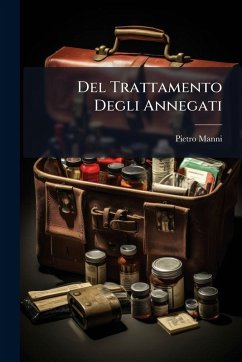
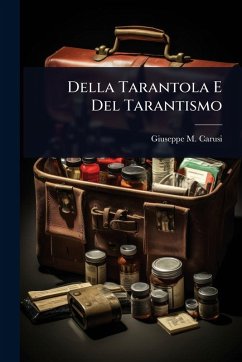
![Collectio Salernitana, Ossia Documenti Ined. E Trattati Di Medicina Appartenenti Alla Scuola Medica Salernitana, Raccolti Ed. Illustr. Da G.e.t. Henschel [and Others] Cover Collectio Salernitana, Ossia Documenti Ined. E Trattati Di Medicina Appartenenti Alla Scuola Medica Salernitana, Raccolti Ed. Illustr. Da G.e.t. Henschel [and Others]](https://bilder.buecher.de/produkte/74/74630/74630088n.jpg)
